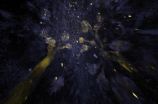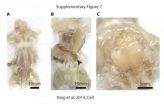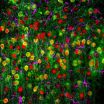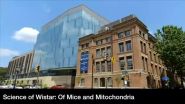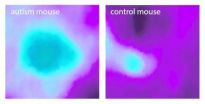(Press-News.org) The ability to see through organs and even the entire body to visualize long-range connections between cells as well as fine-grained cellular structures has been a long-time dream of biologists. A study published by Cell Press July 31st in the journal Cell has now made that dream a reality, revealing simple methods for making opaque organs, bodies, and human tissue biopsies transparent, while keeping the cellular structures and connections intact. The protocols could pave the way for a better understanding of brain-body interactions, more accurate clinical diagnoses and disease monitoring, and a new generation of therapies for conditions ranging from autism to chronic pain.
"Although the idea of tissue clearing has been around for a century, to our knowledge, this is the first study to perform whole-body clearing, as opposed to first extracting and then clearing organs outside the adult body," says senior study author Viviana Gradinaru of the California Institute of Technology. "Our methodology has the potential to accelerate any scientific endeavor that would benefit from whole-organism mapping, including the study of how peripheral nerves and organs can profoundly affect cognition and mental processing, and vice versa."
Three-dimensional maps of intact organs and bodies are crucial for understanding complex, long-distance cellular interactions that play an important role in a range of biological processes. But until now, methods for making whole organs or bodies transparent and thus amenable to imaging and generating 3D maps have been limited to the brain or embryos. Gradinaru and her collaborators previously developed a brain-clearing technique called CLARITY, which involves embedding tissue into hydrogels to preserve its 3D structure and important molecular features, and then using detergents to extract lipids that make the tissue opaque.
In the new study, the researchers set out to make CLARITY suitable for whole organs and bodies, in part by making the process faster. First, they identified the optimal hydrogel that allows detergents to quickly remove lipids from tissue using an approach named passive CLARITY technique (PACT). To markedly speed up the clearing process without causing tissue damage, they introduced an innovative procedure called perfusion-assisted agent release in situ (PARS), which involves directly delivering the hydrogel and clearing reagents into the bloodstream of intact rodents. The reagents diffused throughout the tissues and completely clarified organs such as the kidney, heart, lung, and intestine within 2 to 3 days, while the whole brain and entire body cleared within 2 weeks.
The researchers also developed a recipe for refractive index matching solution (RIMS), which enables the long-term storage of cleared tissue and imaging thick, cleared tissue using a conventional confocal microscope. The new methods allow for the analysis of intact connections between cells as well as structures and molecules within single cells using standard genetic and molecular biology techniques. "Our easy-to-use tissue clearing protocols, which employ readily available and cost-effective reagents and equipment, will make the subcellular interrogation of large tissue samples an accessible undertaking within the broader research and clinical communities," Gradinaru says.
INFORMATION:
Cell, Yang et al.: "Single-Cell Phenotyping within Transparent Intact Tissue Through Whole-Body Clearing."
Author Viviana Gradinaru is highlighted as part of Cell's 40 Under 40. To celebrate 40 years of Cell, we invited 40 scientists from around the world and working in diverse biological fields—all under the age of 40—to talk about science, their personal philosophies, the joys and challenges of research, and their lives away from the bench. Read Q&A with Dr. Gradinaru at http://www.cell.com/40/viviana-gradinaru
See-through organs and bodies will accelerate biomedical discoveries
2014-07-31
ELSE PRESS RELEASES FROM THIS DATE:
Goalkeepers prone to 'gambler's fallacy' but penalty takers fail to exploit it
2014-07-31
After a string of penalties aimed in the same direction, goalkeepers are more likely to dive in the opposite direction on the next penalty but kickers fail to exploit this pattern, finds new UCL research.
The study, published in Current Biology, shows that penalty shoot-outs in international tournaments resemble a psychological game. The researchers studied penalty shoot-out videos from all World Cup and Euro finals tournaments between 1976 and 2012.
They found that each team of kickers produced more or less random sequences of kicks to the left or the right of the ...
Birthday matters for wiring-up the brain's vision centers
2014-07-31
Researchers at the University of California, San Diego School of Medicine have evidence suggesting that neurons in the developing brains of mice are guided by a simple but elegant birth order rule that allows them to find and form their proper connections.
The study is published online July 31 in Cell Reports.
"Nothing about brain wiring is haphazard," said senior author Andrew Huberman, PhD, assistant professor in the Department of Neurosciences, Division of Biological Sciences and Department of Ophthalmology, UC San Diego.
A mature, healthy brain has billions ...
New mapping approach lets scientists zoom in and out as the brain processes sound
2014-07-31
Researchers at Johns Hopkins have mapped the sound-processing part of the mouse brain in a way that keeps both the proverbial forest and the trees in view. Their imaging technique allows zooming in and out on views of brain activity within mice, and it enabled the team to watch brain cells light up as mice "called" to each other. The results, which represent a step toward better understanding how our own brains process language, appear online July 31 the journal Neuron.
In the past, researchers often studied sound processing in various animal brains by poking tiny electrodes ...
'Rewired' mice show signs of longer lives with fewer age-related illnesses
2014-07-31
VIDEO:
TRAP-1 is a protein vital for the production of chemical energy in the mitochondria of cells, but it is over-produced in tumor cells. The laboratory of Dr. Dario Altieri at...
Click here for more information.
While developing a new cancer drug, researchers at The Wistar Institute discovered that mice lacking a specific protein live longer lives with fewer age-related illnesses. The mice, which lack the TRAP-1 protein, demonstrated less age related tissue degeneration, ...
Drug target identified for common childhood blood cancer
2014-07-31
In what is believed to be the largest genetic analysis of what triggers and propels progression of tumor growth in a common childhood blood cancer, researchers at NYU Langone Medical Center report that they have identified a possible new drug target for treating the disease.
T-cell acute lymphoblastic leukemia is one of the most common and aggressive childhood blood cancers. An estimated quarter of the 500 adolescents and young adults diagnosed with the cancer each year in the U.S. fail to achieve remission with standard chemotherapy drugs.
In a cover-story report ...
Molecule enhances copper's lethal punch against microbes
2014-07-31
DURHAM, N.C. – Harnessing a natural process in the body that pumps lethal doses of copper to fungi and bacteria shows promise as a new way to kill infectious microbes, a team of scientists at Duke University report.
Publishing in the July 31, 2014, issue of the journal Chemistry & Biology, the researchers describe a way of exploiting the unique chemical response from the body's immune system to attack pathogens using copper, long known for its antimicrobial properties, in a way that minimizes harm to the rest of the body.
The findings in cell and animal models represent ...
Master HSF supports reprogramming of normal cells to enable tumor growth and metastasi
2014-07-31
CAMBRIDGE, Mass. (July 31, 2014) – Long associated with enabling the proliferation of cancer cells, the ancient cellular survival response regulated by Heat-Shock Factor 1 (HSF1) can also turn neighboring cells in their environment into co-conspirators that support malignant progression and metastasis.
The finding, reported by Whitehead Institute scientists this week in the journal Cell, lends new insights into tumor biology with significant implications for the diagnosis, prognosis, and management of cancer patients.
Over the past several years, researchers in the ...
Insular cortex alterations in mouse models of autism
2014-07-31
This news release is available in German.
The insular cortex is an integral "hub", combining sensory, emotional and cognitive content. Not surprisingly, alterations in insular structure and function have been reported in many psychiatric disorders, such as anxiety disorders, depression, addiction and autism spectrum disorders (ASD). Scientists from Harvard University and the Max-Planck Institute of Neurobiology in Martinsried now describe consistent alterations in integrative processing of the insular cortex across autism mouse models of diverse etiologies. In particular, ...
C. difficile vaccine proves safe, 100 percent effective in animal models
2014-07-31
An experimental vaccine protected 100 percent of animal models against the highly infectious and virulent bacterium, Clostridium difficile, which causes an intestinal disease that kills approximately 30,000 Americans annually. The research is published ahead of print in Infection and Immunity.
In the study, the vaccine protected the mice and non-human primates against the purified toxins produced by C. difficile, as well as from an orogastric spore infection, a laboratory model that mimics the human disease, after only two immunizations.
"Animals that received two ...
Scientists find growing consensus: Political attitudes derive from body and mind
2014-07-31
Lincoln, Neb., July 31, 2014 -- Do people make a rational choice to be liberal or conservative? Do their mothers raise them that way? Is it a matter of genetics?
Two political scientists from the University of Nebraska-Lincoln and a colleague from Rice University say that neither conscious decision-making nor parental upbringing fully explain why some people lean left while others lean right.
A growing body of evidence shows that physiological responses and deep-seated psychology are at the core of political differences, the researchers say in the latest issue of the ...
